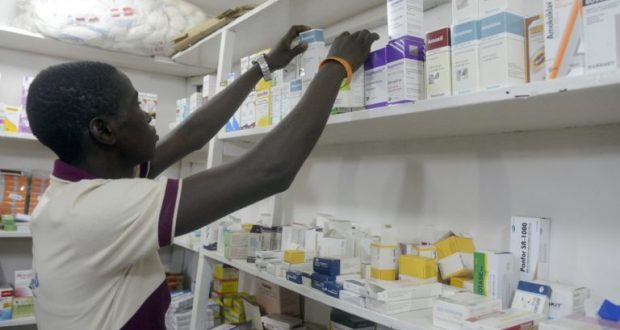By Rachel Silverman and Amanda Glassman
(EMPIRE NEWS NETWORK—ENN)— Healthy competition from generic drugs is often held up as a “cure” for high drug prices — a shared concern across rich and developing countries alike. For many low- and middle-income countries, however, a new report from the Center for Global Development that we co-authored shows that global markets for generic medicines are failing, leaving the poorest patients without safe and affordable essential medicines.
The first point of failure is drug quality. In wealthy countries, residents can usually trust that all drugs on pharmacy shelves are safe, authentic, and potent. Most families and doctors are happy to opt for quality-assured generics that have been tested for bioequivalence, systematically monitored for adverse events, subject to regular inspection for manufacturing quality, and priced well below their branded competitors. As we describe in the report, in the United States and the United Kingdom, for example, non-branded generic drugs account for more than 80% of all pharmaceutical consumption by volume (and roughly 30% by value).
In poor countries, by contrast, regulatory and quality control systems are often ill-equipped and under-resourced to ensure medicine quality, which can allow low-quality or fraudulent drugs to infiltrate the market. In her new book, “Bottle of Lies,”Katherine Eban highlights manufacturing shortcuts and fraud among Indian and Chinese manufacturers that endanger the quality of the global supply of generic drugs. And these challenges are shared across low- and middle-income countries, including emerging economies like Indonesia and Nigeria.
So when a Nigerian woman goes to the pharmacy, she’s rightfully suspicious about whether unfamiliar “no-name” pills work safely. Instead, she looks for other signals of medicine quality. Most likely, she’ll settle on a familiar brand name, usually sold at a substantial price premium. This is a similar story for many people living in the poorest countries where unbranded generics represent just 5% of all medicine consumption. Most health workers and patients there instead opt for familiar brands that (they hope) signal higher quality.
The second point of failure is limited competition. Entering new markets is costly and time consuming for generic manufacturers. For each new generic, each country needs to review and approve a product dossier, a procedure filled with bureaucratic red tape. That means under-resourced regulatory agencies spend much of their time and energy on registering new products, leaving little capacity to inspect them and ensure quality once they hit the market. When market entry is difficult or where government policies restrict purchasing to local manufacturers or middlemen, a single seller can capture 85% or more of the market for entire therapy classes such as contraceptives in Senegal, diabetes medicines in Zambia, or anti-parasitics in South Africa.
Healthy generic competition can help keep medicine prices in check. In the U.S., the entry of additional generic competitors helps push down prices: by 6% after the first entrant, 48% after a second entrant, and up to 95% by the time a 19th generic manufacturer enters the market. In some large emerging economies, generic competition is thriving, and prices are low. But in many smaller low- and middle-income countries, where competition is limited and prices are marked up before they reach consumers, patients can face highly inflated prices: up to 30 times more than a minimum international reference price for basic generic medicines, our report shows.
While some experts tout increased price transparency as an answer to these failures, easing market entry and promoting competition through strategic, effective procurement is a better way forward. The World Health Organization and country governments need to focus on enhancing competition and creating an enabling and adequate policy environment for quality generics competition.
The WHO has already set up a “Collaborative Registration Procedure” to help reduce the costs of market entry of quality-assured generic products into small low- and middle-income countries. Next, the WHO should fully fund, expand, and endorse this process so it can become the norm for relatively small markets.
Country governments, for their part, should ease legal and/or regulatory barriers, such as country-specific labeling requirements, to expedited registration and jump on board a collaborative global or regional registration process. By streamlining national registration processes, they can also reallocate regulatory resources to helping catch and remove fake or tainted drugs from the pharmacy pipeline.
Policies for how countries select and procure products also require reexamination to boost competition and improve access to medicines. Policies that require purchase of nationally manufactured products can inhibit market entry and prevent efforts to pool procurement across countries, creating missed opportunities for savings. Some countries want to expand local manufacturing as a solution, but local monopolies and potential conflicts of interest can keep prices high. Corruption in the procurement of medicines also represents a major challenge. Understanding the scale of the problems in each country and designing bespoke reforms should be a priority for partnerships between the World Bank or the International Monetary Fund and national governments.
Patients around the world are being harmed by failing global markets for generic drugs. With leadership from the WHO and national governments, countries can take a big step in the right direction to close this gap, which severely affects the world’s poor.
Rachel Silverman is a policy fellow at the Center for Global Development. Amanda Glassman is the center’s executive vice president and CEO of Center for Global Development Europe.
 Westside Story Newspaper – Online The News of The Empire – Sharing the Quest for Excellence
Westside Story Newspaper – Online The News of The Empire – Sharing the Quest for Excellence



